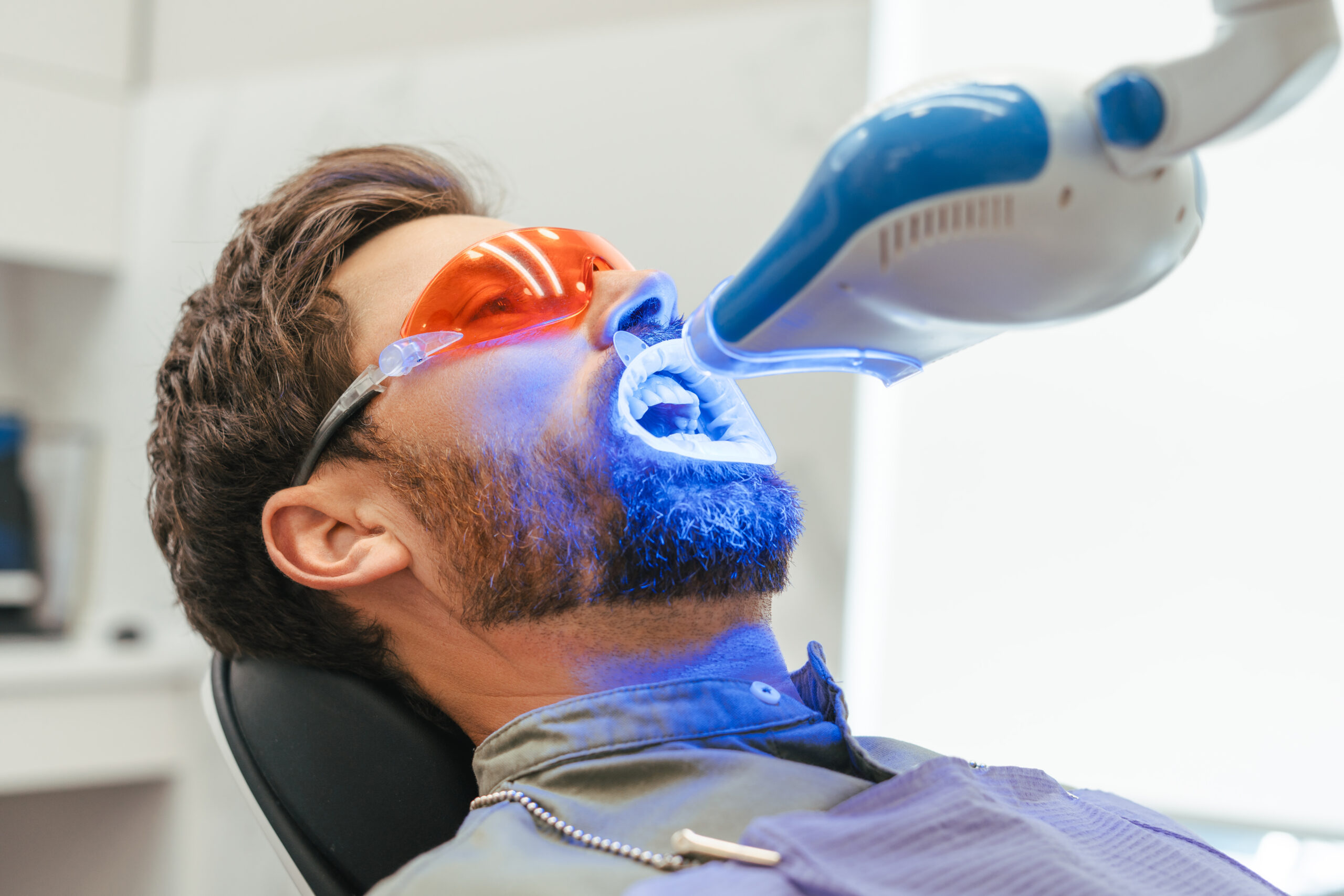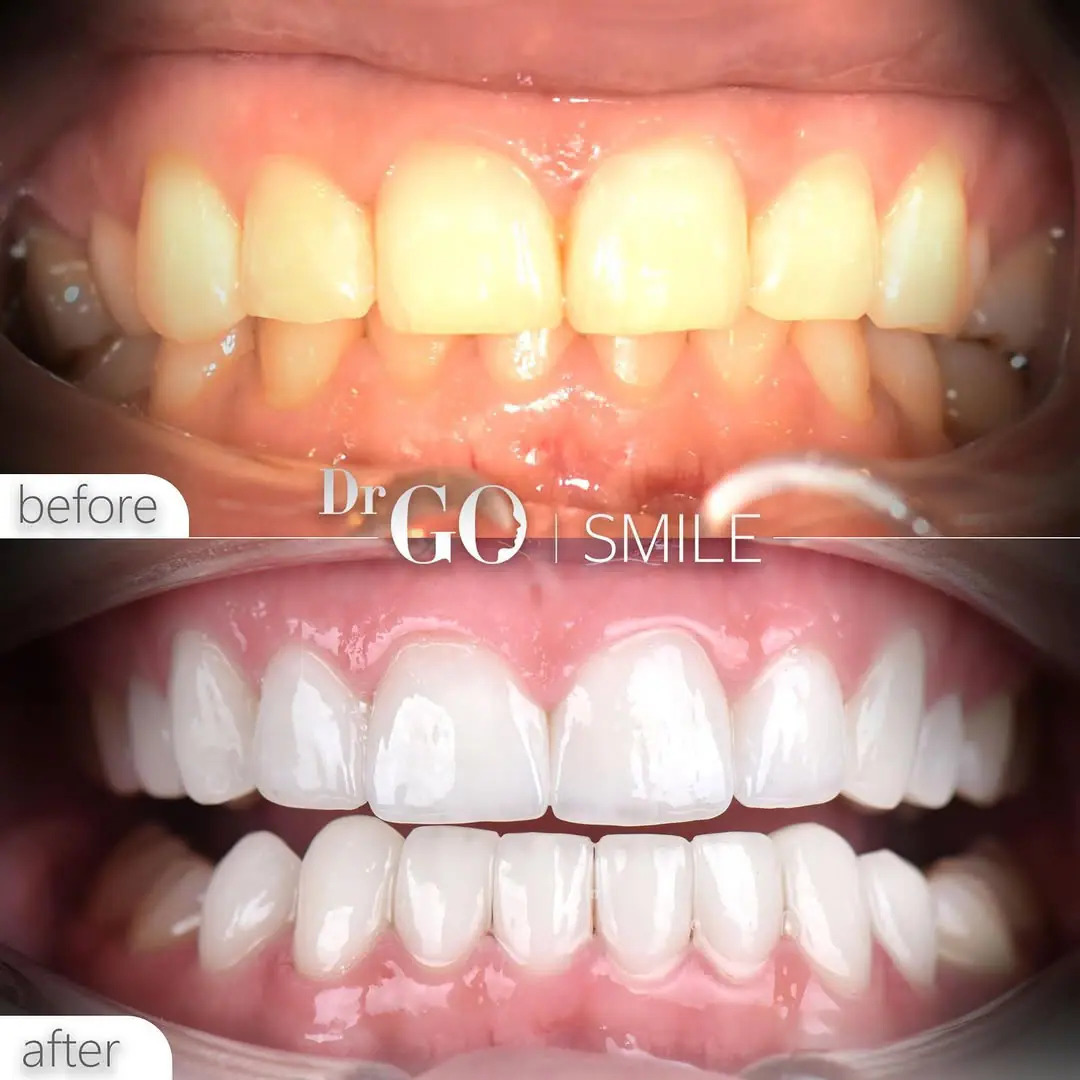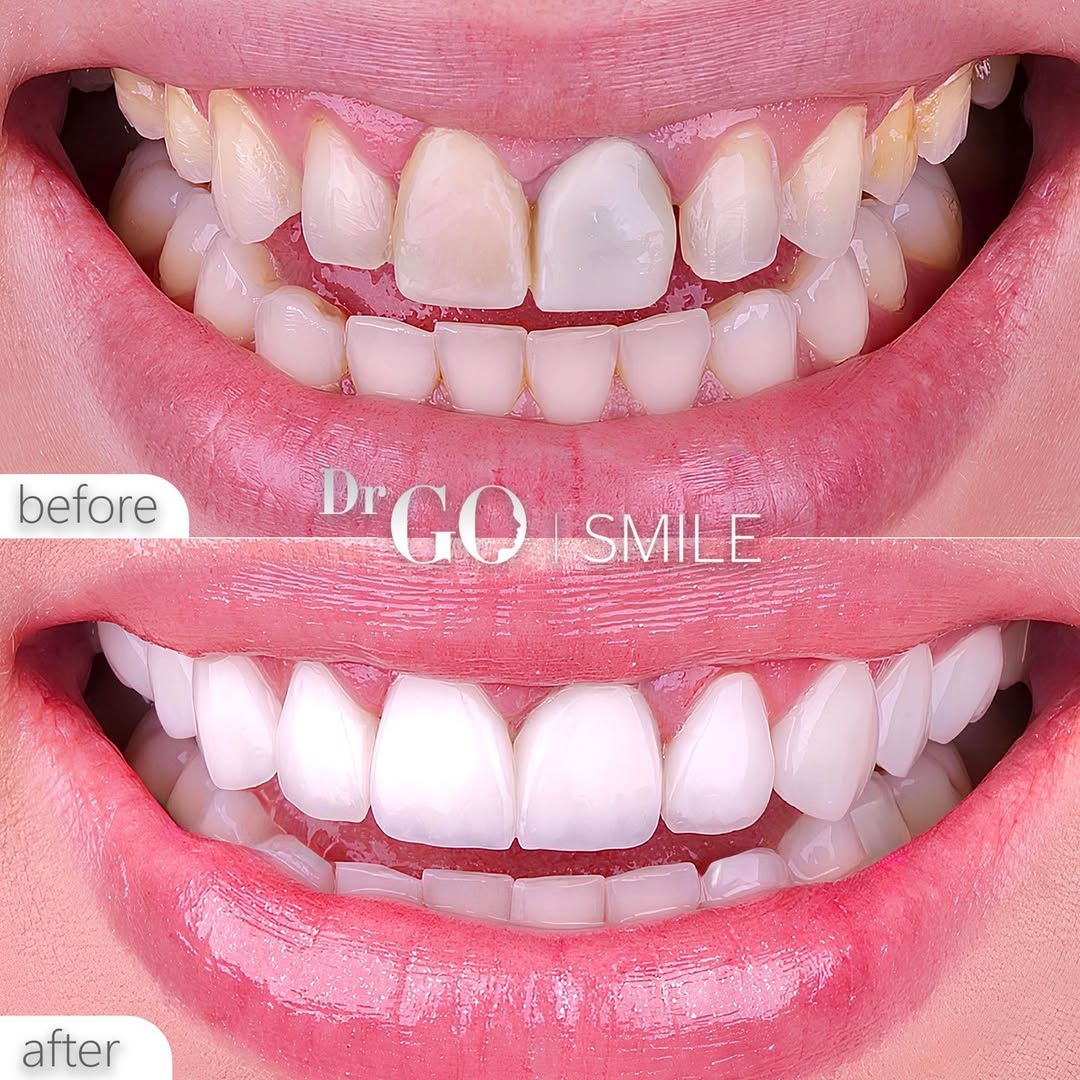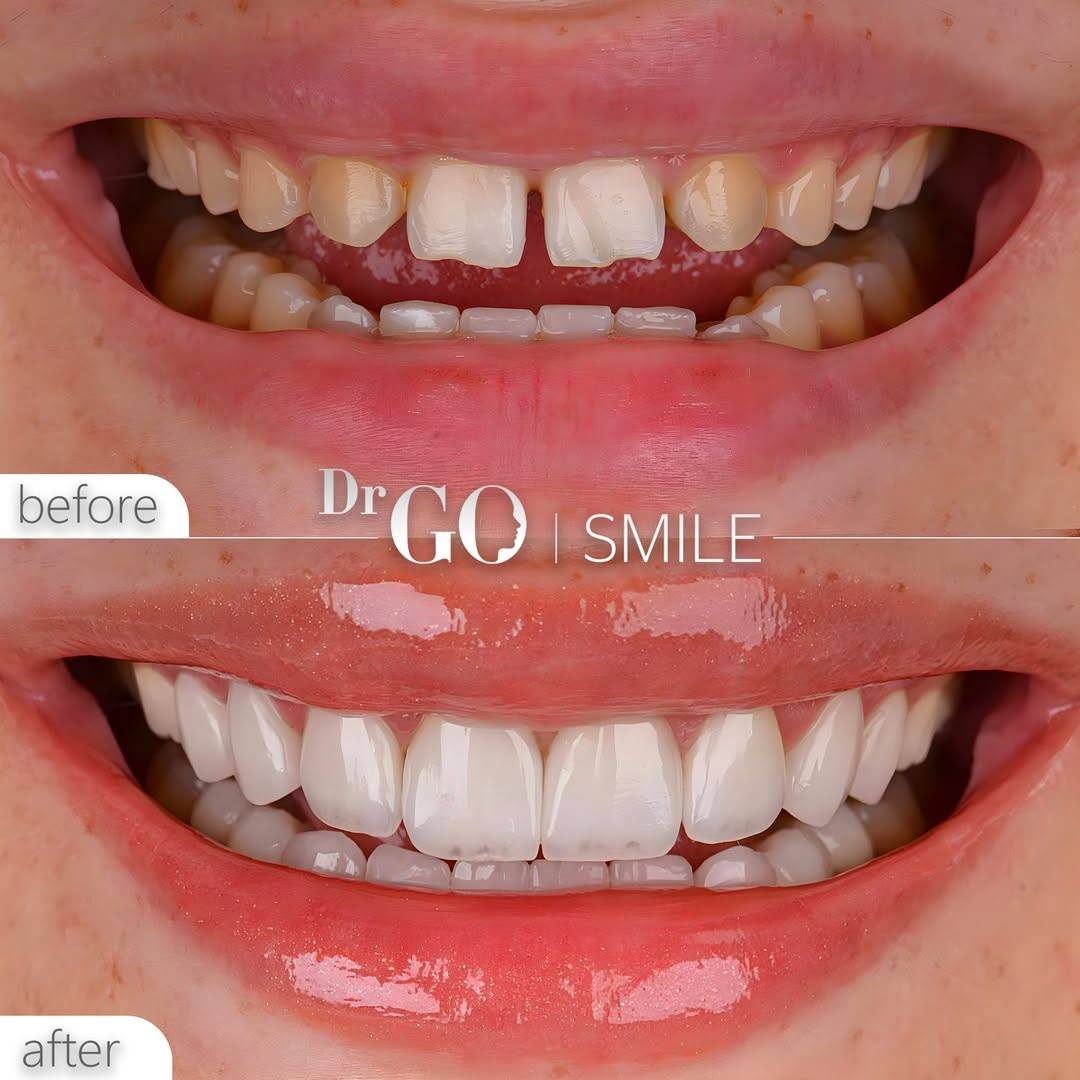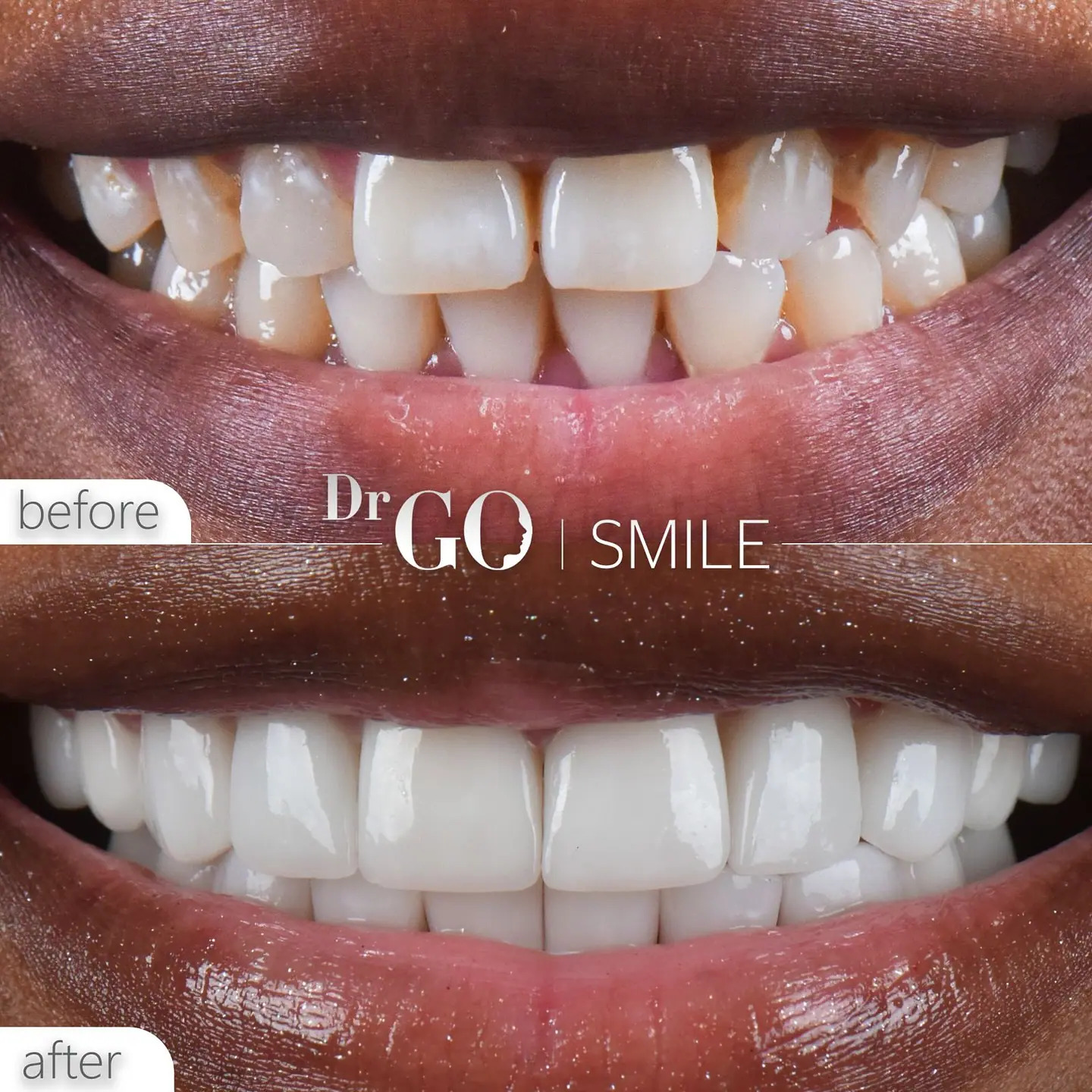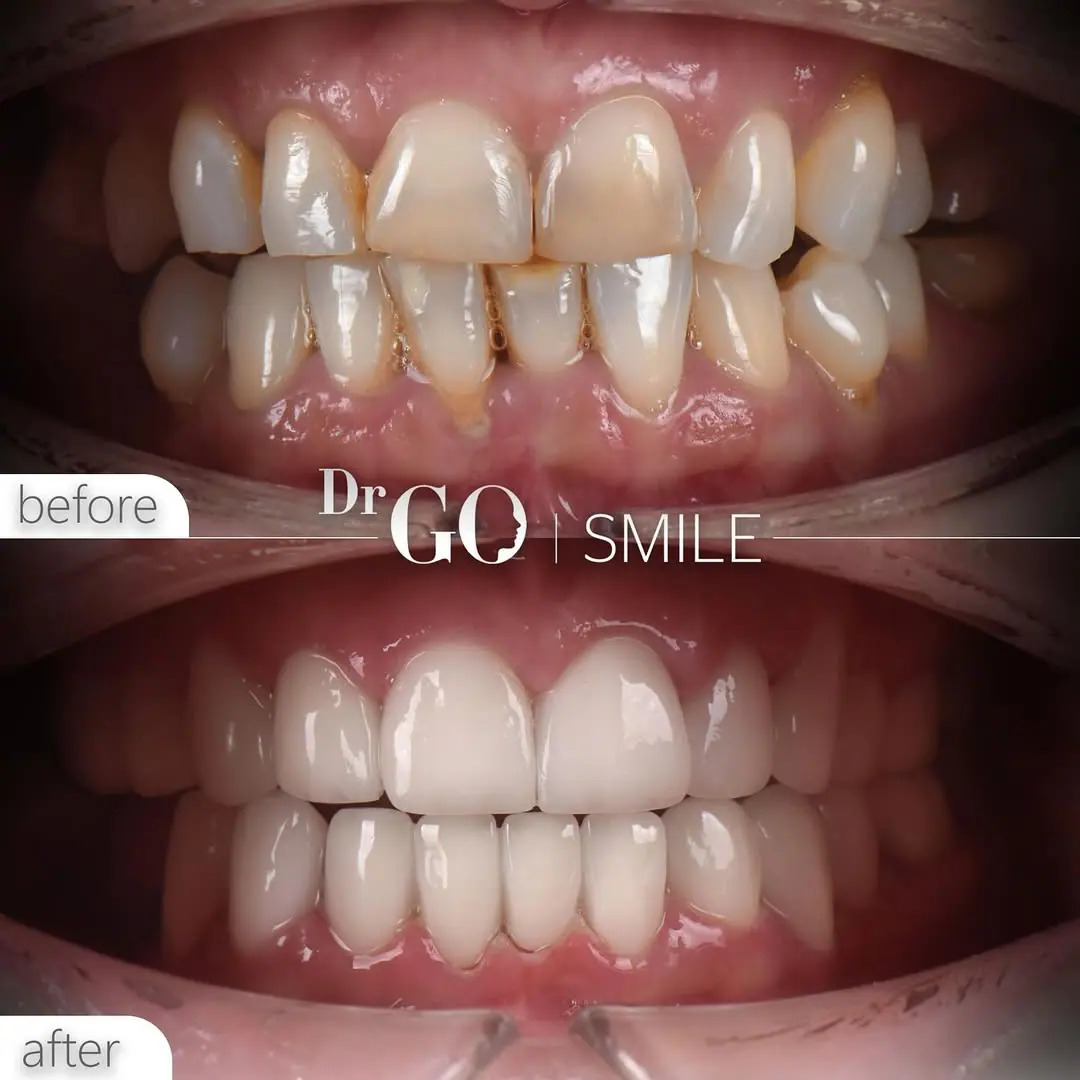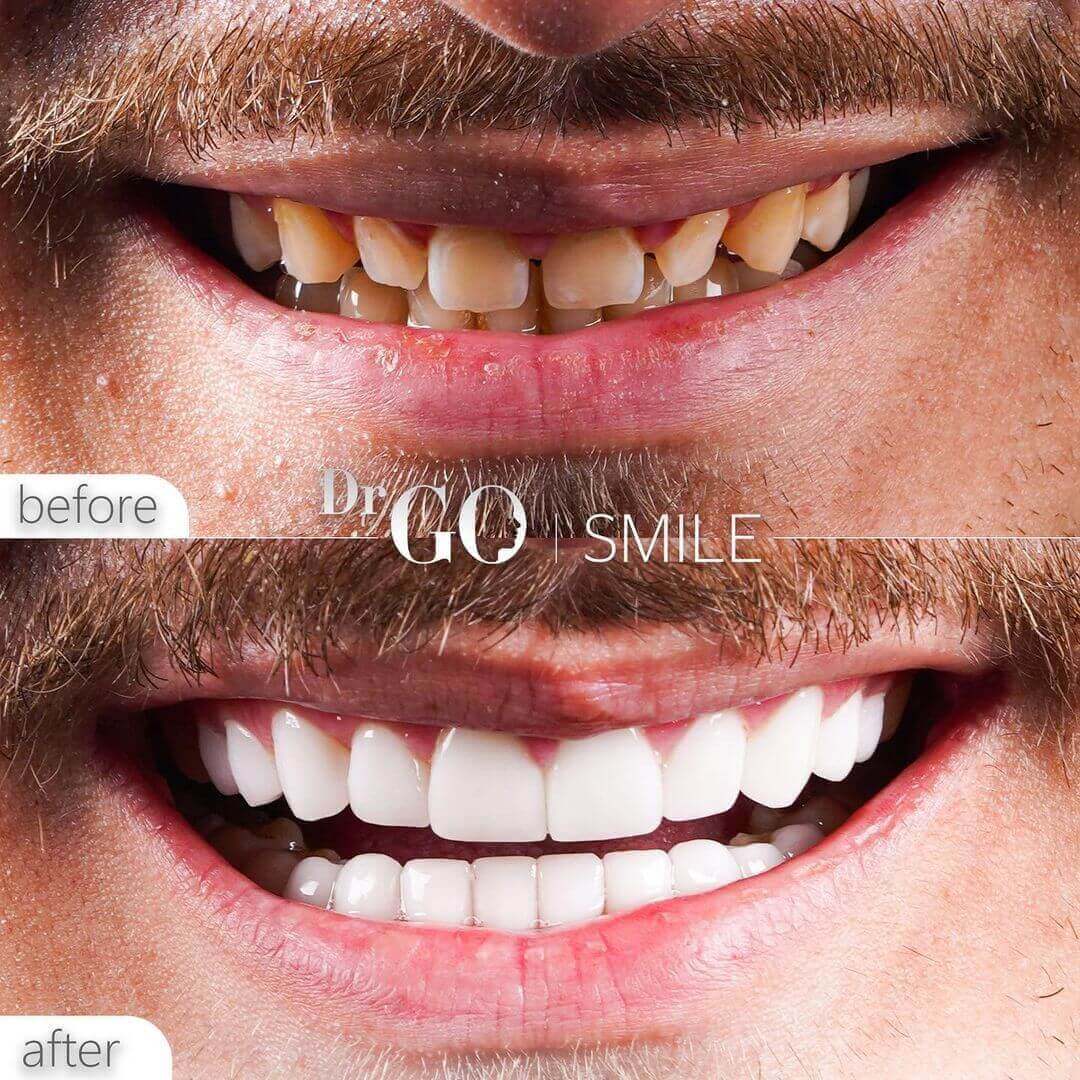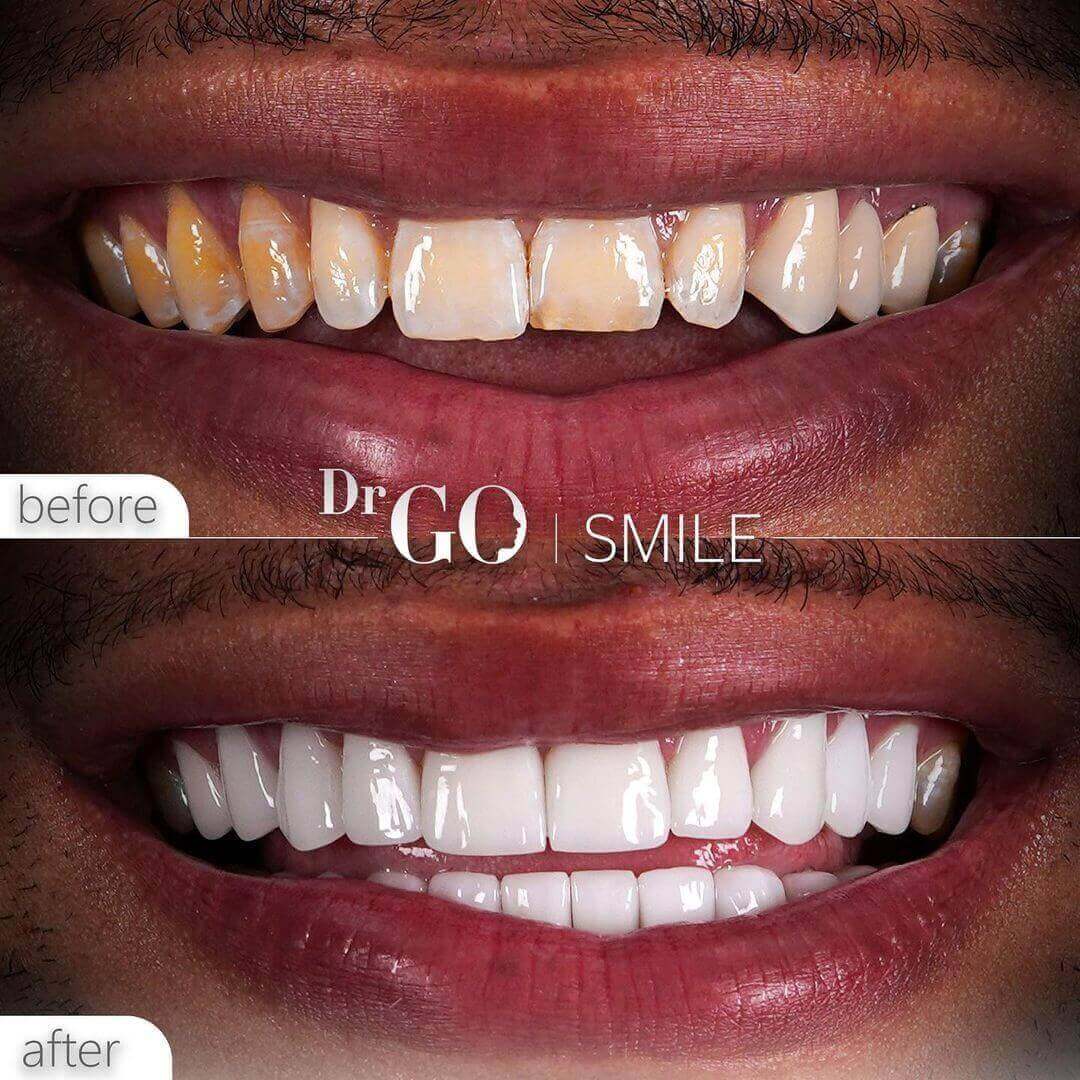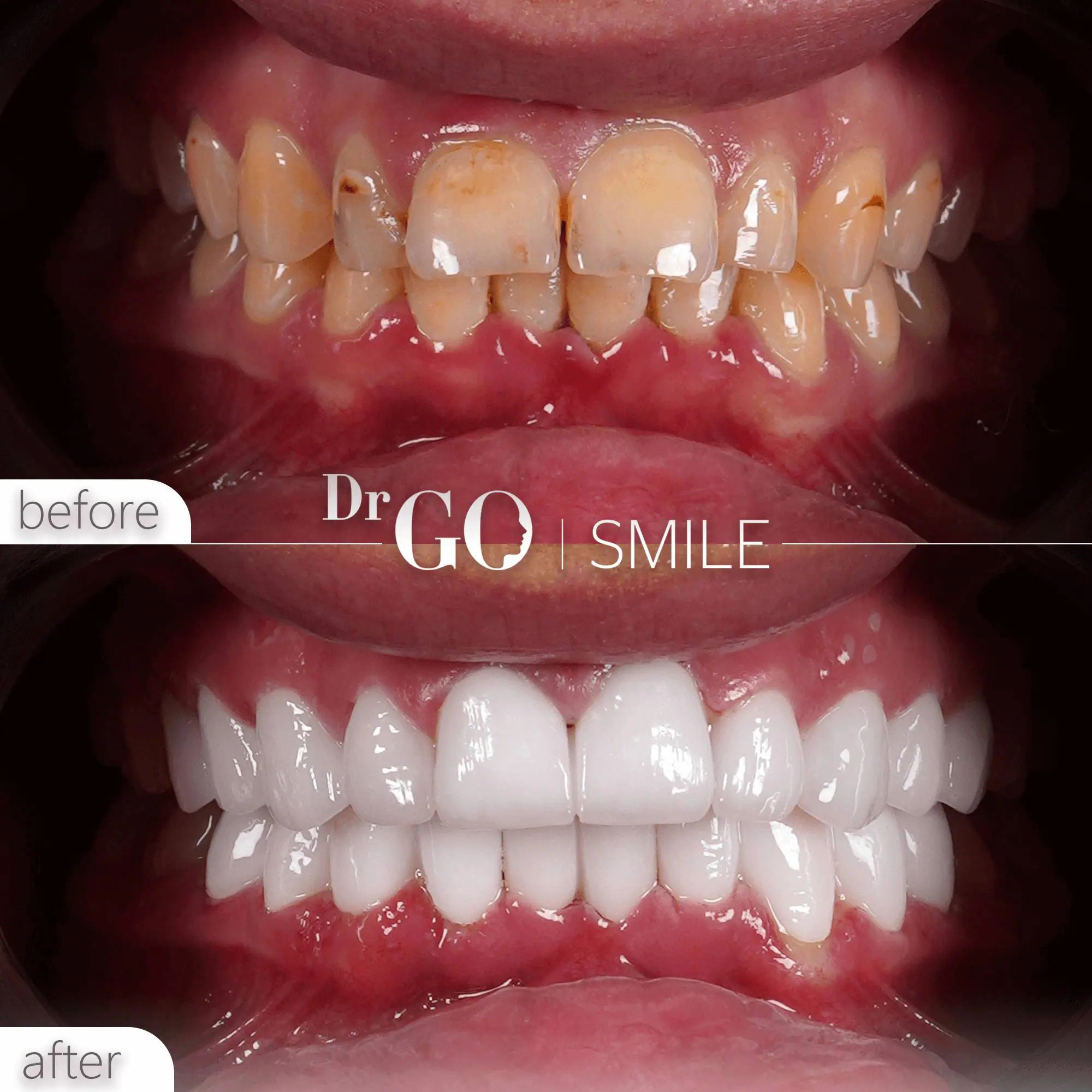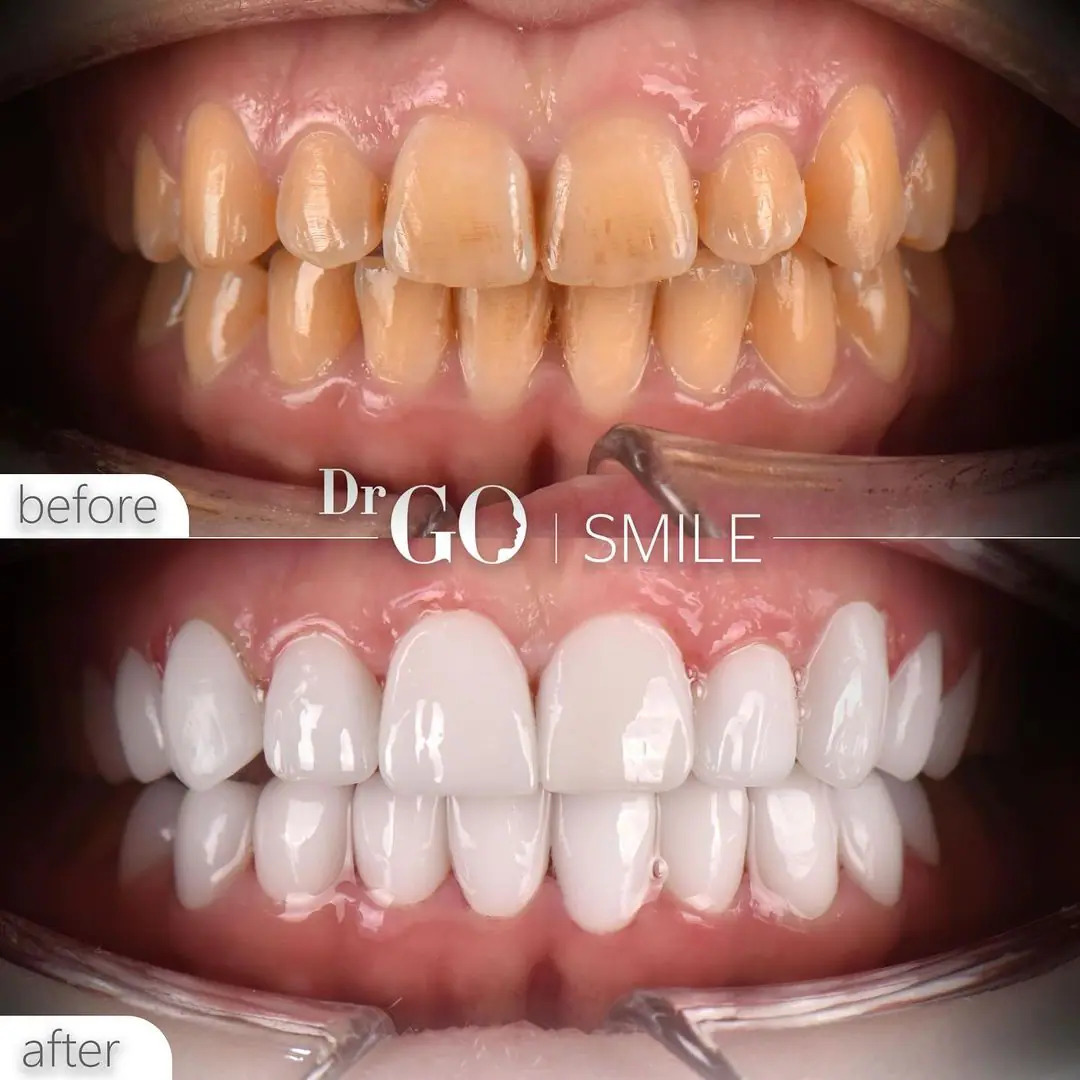Today, a healthy smile has become an important part of not only personal care, but also social confidence and aesthetic perception. Bright and white teeth improve both a person’s appearance and self-confidence. At this point, one of the most preferred cosmetic dentistry procedures is teeth whitening, which is a scientifically based treatment method aimed at removing discoloration and lightening the natural tooth color by several shades. Especially for teeth that have yellowed over time due to external factors such as coffee, tea, and cigarettes, teeth whitening is a fast, effective, and reliable solution.
What is Teeth Whitening?
Teeth whitening is a cosmetic treatment that removes discoloration from the tooth surface and lightens the tooth’s color by several shades without damaging the enamel. It is usually performed using special gels containing hydrogen peroxide or carbamide peroxide. These substances penetrate the tooth enamel, break down the stains that have formed, and thus achieve a lighter tooth color.
The teeth whitening procedure can be applied in a clinical setting with professional equipment or with at-home methods. The goal of both methods is to aesthetically improve the tooth’s color. However, for the procedure to be effective and safe, it must be performed under the supervision of a dentist.
Why is Teeth Whitening Done?
The natural color of teeth can yellow or darken over time due to many reasons. This situation can cause aesthetic concerns for a person. The teeth whitening procedure removes these color changes on the tooth surface, allowing the person to have whiter and healthier-looking teeth.
In addition, some individuals may have genetically yellowish teeth. In these cases, too, teeth whitening provides an aesthetic result without harming the person’s natural structure. It is a procedure that is often preferred, especially before social events such as special days, presentations, stage performances, or weddings.
What are the Teeth Whitening Methods?
Teeth whitening procedures are basically divided into two main groups: in-office (applied in the clinic) and at-home (applied by the patient under the supervision of a dentist) methods. Both methods have their own unique advantages.
- In-Office Teeth Whitening (Power Bleaching): This is performed by a dentist in a clinical setting. High-concentration whitening gels and special light systems are used during the procedure. It usually creates a noticeable difference in a single session.
- At-Home Teeth Whitening: Custom trays are prepared for the patient by the dentist. The patient uses these trays with the gel recommended by the dentist for a certain period at home. This method takes longer but provides a slow and balanced result.
- Combined Whitening: This is a procedure where both in-office and at-home methods are used together, and the effect is longer-lasting.
Which method is preferred is determined by the current color of the tooth, the degree of discoloration, and the patient’s expectations.
Who is Teeth Whitening Suitable For?
In general, any individual over the age of 18 with good oral and dental health is suitable for this procedure. However, for individuals with gum disease, cavities, or extreme sensitivity, these problems must be treated first. The teeth whitening procedure gives effective results on healthy teeth.
In pregnant and breastfeeding women, aesthetic procedures are usually postponed. In addition, for individuals who smoke excessively, tooth color may darken again, so it is recommended to reconsider habits. For patients with artificial restorations (veneers, fillings, etc.) on their teeth, a special plan needs to be made for aesthetic harmony, as the color of these materials will not change.
What Should Be Considered Before Teeth Whitening?
A detailed oral and dental examination should be performed before the teeth whitening procedure. Tartar cleaning, cavity treatment, and any gum inflammation must be addressed before the procedure. Additionally, the pre-whitening tooth color is determined and recorded with digital or manual measurements by the dentist.
A personalized whitening plan is created by also taking into account the patient’s history of tooth sensitivity, fluoride use, systemic diseases, and medications. This preparation process directly affects the safety and success of the procedure.
How is the Teeth Whitening Procedure Applied?
In in-office teeth whitening, the gums are first covered with a protective barrier. Then, the whitening gel is applied to the teeth and activated with a special light source. This procedure is usually done in 2-3 cycles of 15-20 minutes. The total procedure time is about 1 hour.
In the at-home application, the patient applies the gel to the trays provided by the dentist and wears these trays for a certain number of hours per day. The process usually takes 1-2 weeks. The application is stopped when the desired result is achieved. In both methods, the tooth color is lightened by several shades to achieve an aesthetic appearance.
Is Teeth Whitening Permanent?
Although teeth whitening is not a permanent procedure, its effect can be maintained for many years with proper care. The duration of the whiteness achieved is determined by factors such as the person’s eating habits, coffee and cigarette consumption, and oral care routine. On average, the whitening effect can last for 6 months to 2 years.
This period can be extended with touch-up applications performed at certain intervals. Especially the results obtained with combined whitening methods are more long-lasting. However, this procedure is not recommended to be repeated constantly; it should be done under the supervision of a dentist at ideal intervals.
What Should Be Considered After Teeth Whitening?
- Stay away from colored foods and drinks (tea, coffee, wine, ketchup, etc.) for the first 48 hours.
- Cigarette use should be limited.
- Avoid extremely hot or cold foods.
- Do not neglect brushing and flossing.
- Special toothpaste or fluoride-containing products recommended by the dentist can be used.
Who Should Not Get Teeth Whitening?
- Individuals with gum disease
- Those with active cavities in their mouth
- Individuals under the age of 18
- Pregnant and breastfeeding women
- Those with numerous restorative materials (fillings, crowns) in their teeth
- Some individuals with fluorosis or tetracycline staining (evaluated on a case-by-case basis)
Are There Any Side Effects of Teeth Whitening?
The teeth whitening procedure is a safe application when done in a professional setting. However, some temporary effects may be seen in some individuals:
- Hot-cold sensitivity in the teeth
- Temporary burning sensation in the gum areas
- Mild throbbing in the first few days
- Rarely, temporary color unevenness
These side effects usually subside on their own within 1-2 days. If necessary, desensitizing products can be used with the dentist’s recommendation. Performing the procedure under expert supervision minimizes the risks.
How Much Do Teeth Whitening Procedures Cost?
The cost of teeth whitening varies depending on the method chosen (in-office, at-home, combined), the number of sessions to be applied, the dentist’s experience, and the equipment of the clinic. The quality of the materials used, the light system, and any additional procedures are also factors that affect the price. Contact us now for teeth whitening prices.

